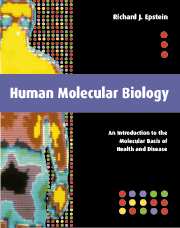Book contents
- Frontmatter
- Contents
- Preface
- Acknowledgements
- Read me first …
- Glossary
- Dedication
- Introduction: A disease for every gene?
- I From molecular biology to human genetics
- II From molecular genetics to human biochemistry
- III From molecular biochemistry to human cell biology
- IV From molecular cell biology to human physiology
- V From molecular physiology to human molecular biology
- Index
Introduction: A disease for every gene?
Published online by Cambridge University Press: 01 June 2011
- Frontmatter
- Contents
- Preface
- Acknowledgements
- Read me first …
- Glossary
- Dedication
- Introduction: A disease for every gene?
- I From molecular biology to human genetics
- II From molecular genetics to human biochemistry
- III From molecular biochemistry to human cell biology
- IV From molecular cell biology to human physiology
- V From molecular physiology to human molecular biology
- Index
Summary
Most of the time we take our health for granted. “Health” is often equated with lack of disease, but defining disease is not straightforward. Is ageing a disease? Acne? Fatigue? How about loose-jointedness? Senile irritability? Dandruff, say, or color-blindness? Obesity? What about depression? Homosexuality? Hypersexuality? Hyperintelligence? Or baldness, or hirsutism? And even plain ugliness? – we do, after all, train plastic surgeons to treat it.
Doctors often portray diseases as syndromes, living illustrations of which are labeled cases. That students often perceive diseases as puzzles to be solved is therefore unsurprising. However, away from the ivory tower of Grand Rounds, diseases may not be so clearly bar-coded. Patients recover or die without a diagnosis, overlap syndromes occur, multiple pathologies coexist, spontaneous and functional phenomena are freely invoked. The notion of disease as a pure clinicopathologic entity is thus blurred in practice.
In recent years this muddle has been clarified by the insight that genetic mutations may contribute to a disease phenotype; for example, the discovery of mutations in the rhodopsin gene transformed retinitis pigmentosa from a Corridor Curiosity to a Textbook Tutorial. This change in outlook has brought science and medicine together. Articles concerning human disease now flood into scientific journals, just as gene sequence depositions are drifting into medical journals. In clinical textbooks molecular explanations are supplanting bedside descriptions, whereas primers of molecular biology often use human diseases to enliven their bloodless subject matter.
- Type
- Chapter
- Information
- Human Molecular BiologyAn Introduction to the Molecular Basis of Health and Disease, pp. 3 - 6Publisher: Cambridge University PressPrint publication year: 2002



